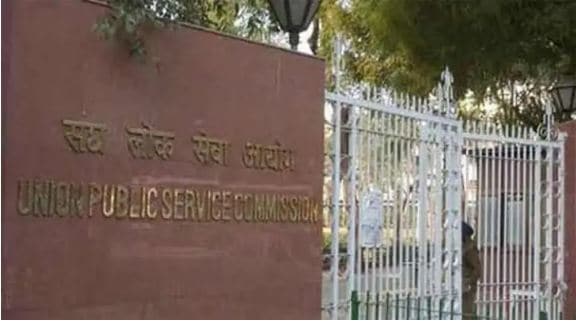In this piece, we break down the 2025 Prelims into 10 key takeaways—to help you reflect, recalibrate, and most importantly, plan your comeback (or your next move).
1. History and Art & Culture: Easy – and in a paper like this, that felt like a warm hug from UPSC
This year’s UPSC Prelims saw a significant shift in trend, with 16 questions emerging from the History and Art & Culture section. Marking a notable reversal from last year, Modern Indian History dominated the segment, contributing as many as 9 questions, many of which focused on the Independence Struggle, marching around Mahatma Gandhi and the Non-Cooperation Movement.
In a nod to variety (or perhaps a gentle prank), UPSC threw in a question linking fruits in India to their Portuguese origins—a definite departure from the usual canon of archaeological sites, monuments, and Buddha’s life.
And speaking of Buddhism, no, UPSC’s favourite topic didn’t show up this year. Shocking, we know. Instead, candidates were greeted with a rather easy question on Fa-Hein, probably to keep the peace. Meanwhile, Raja Ram Mohan Roy and Vishnu Digambar Paluskar made an appearance, keeping the modern section populated with historical personalities.
On a more celebratory note, the 100-year anniversary of the discovery of the Indus Valley Civilization was acknowledged—albeit gently—with a straightforward question on the famous ‘Dancing Girl’. No complicated seals or town planning here—just a graceful nod to history. A creative twist appeared in a question blending ancient Indian history and geography, which asked candidates to match rivers with their corresponding territorial regions. Other questions revolved around rulers of ancient India.
Story continues below this ad
A throwback to the 2016 paper came in the form of Araghatta—yes, that ancient Indian water wheel UPSC can’t seem to get enough of. Maybe it’s time for them to order a fresh glossary?
Civil services mentor Shikhar Sachan told The Indian Express that “the History section was arguably the easiest in the last five years.”
But here’s your friendly reminder: in UPSC, “easy” is just a polite way of saying “don’t mess this up.” Because if you mess it up, you miss the train.
2. Polity: Familiar faces, but trickier masks
There wasn’t much novelty in this year’s Polity section, with UPSC largely sticking to its traditional playbook—though not without its trademark mind games. The number of questions dipped to around 12, down from 15 last year. The topics? All textbook staples: House of the People, the President, the Governor, Constitutional Provisions, Councils, Panchayati Raj, Ordinances, Centre–State relations—all comfortably nestled in basic reference books, making the section appear conventional.
Story continues below this ad
But if there’s one thing aspirants have learned over the years, it is this: in UPSC, “easy-looking” often hides a sting.
Mudit Gupta, UPSC mentor, explained: “In the Polity section, the previous year’s trend continued. Like last year, many questions came from the legislative and executive branches. Some were very easy and could be answered using basic books.” However, he added a crucial caveat: “When it came to statement-based questions, UPSC made at least one statement in each question complex, making the entire question challenging for aspirants.”
And that is where the real twist lay.
UPSC chose to maintain its toughest exam tag with its statement-based formats, by basing polity questions mainly on “How many of the above statements are correct?” variety. Every straightforward topic had at least one cleverly crafted statement. And that was enough to confuse even the best-prepared candidates. The result? A section that wasn’t just tricky, but also time-consuming, adding to the overall length and pressure of the paper.
And if you’re feeling confident about those “definitely correct” answers—hold that thought. The official answer key won’t show up until next year, and when it does, it may have a surprise or two in store.
Story continues below this ad
In short, while the Polity section looked familiar, it wore a cleverly disguised UPSC mask—smiling on the surface, but not here to make things easy.
3. Economy: Formulas, fiscal calculations, and a bit of guesswork
Ever imagined UPSC would hand you a calculator in the Economy section? Well, the Unpredictable Public Service Commission lived up to its reputation this year by adding a dash of arithmetic to its usual conceptual fare. Yes, this time they wanted to know if future bureaucrats could actually calculate deficits—because who says civil servants can’t be economists too?
The Economy section featured around 17 questions, retaining its strong conceptual core while throwing in a few numerical surprises. True to tradition, the RBI remained UPSC’s favorite muse, with two questions focusing on its sources of income and regulatory powers.
Banke Bihar, UPSC mentor for Economy, told The Indian Express:
Story continues below this ad
“There was a strong focus on energy and minerals critical to the green economy, such as lithium and other strategic resources, including their geographical locations. Daily-life economic topics were also covered, with questions on RTGS, NEFT, and the international acceptance of UPI. Investment-related concepts appeared prominently, including stock market performance, the difference between bonds and stocks, and Alternative Investment Funds. The recurring issue of agricultural income and taxation, especially the exemption enjoyed by wealthy farmers and its connection to recent farmers’ movements, was also touched upon. The theme of energy and the green economy was clearly visible across multiple questions, reflecting its growing relevance in the global and national context.”
In short, the paper demanded a jack-of-all-trades approach—from monetary policy and financial instruments to the green economy and tax quirks.
And while the level ranged from moderate to difficult, one thing is clear: the examiners, setting the paper for India’s toughest exam know how to keep aspirants on their toes. With a mix of real-world relevance and tricky calculations, this year’s Economy section was a masterclass in smart question design.
Let’s just hope none of these brilliant questions vanish mysteriously from the final answer key—a phenomenon not unheard of in the sacred halls of India’s most revered exam-conducting body.
Story continues below this ad
4. Science & Tech: A balanced mix of buzzwords, basics, and brain-benders
With 15 questions from Science and Technology, this section had all the potential to send shivers down your spine—especially if you got them right at the start (Set B). But if you’ve been keeping up with current affairs, you might’ve had a fighting chance—and maybe even cracked a few with smart guessing.
Electric Vehicles (EVs), always in the headlines, popped up not once but twice. Familiar buzzwords like GAGAN, deep learning, Majorana 1, chemical substances in the news, and UAVs made their expected appearance—basically, if it has been trending in the science section of your daily current affairs digest, UPSC probably picked it up.
But before you start thinking this was just a news-based section, hold that thought.
True to form, UPSC also tested your conceptual clarity—because future bureaucrats, apparently, need to know a little bit of everything. So, alongside the headline topics, came questions on viruses, battery cathodes, activated carbon, cement manufacturing, and even coal gasification. A well-crafted blend of static knowledge and current affairs—or as aspirants would call it, a “mixed bag of hope and horror.”
Story continues below this ad
But was it easy? Of course not. This is UPSC.
Even when you know the topic, the challenge lies in how the question is asked. With confusingly worded statements and options designed to make you second-guess your own notes, the section was less about what you know and more about how calmly you can handle mind games under pressure.
In the end, it was classic UPSC: informative, unpredictable, and just confusing enough to keep everyone humble.
Why is it that when a section feels easier, it also has fewer questions? The International Relations segment this year was relatively smooth sailing—at least for half of the five questions that made it in.All five questions focused on well-known international organizations—BIMSTEC, BRICS, INSTC, and NATO—the usual suspects for any well-read aspirant. If you had been following global affairs (or at least your current affairs notes), these should have been within reach. But just when you start to relax, UPSC’s option traps are there to remind you: Nothing is ever truly easy here.
Story continues below this ad
The only real curveball? A question on the EU’s Nature Restoration Law, which could have stumped those not tracking climate diplomacy closely. Still, if you nailed it with a smart guess—or better yet, actual knowledge—kudos! You deserve a celebratory chai.
But back to the question that haunts every hopeful candidate: Why does the easier section get fewer questions?
Well, don’t ask UPSC. Seriously—don’t. They might just respond next year with more questions, and twice the trickery. So, for now, smile, stay silent, and move on. You survived this round.
6. Miscellaneous: Sports, summits & smart skips
Who says UPSC is boring? Certainly not sports fans, who were pleasantly surprised to find two questions on Chess and Kho Kho in this year’s paper. Yes, the Commission showed it’s not all policy and polity—it can toss in a bit of play too.
The miscellaneous section, often overlooked during revision, delivered questions that were surprisingly basic—if only you had taken them seriously while revising. Topics like the Gandhi Peace Prize, AI Action Summit, and Critical Minerals were all over the news this year. If you were tuned into current affairs, these should have been easy pickings.
Questions on various Boards and North Eastern States of India tested how far in advance your prep went. As for the International Year-themed question—for aspirants of State PCS exams, that was practically a gift-wrapped point.
And here is the real wisdom nugget: Not every question is meant to be attempted. Some are brain teasers, and the smartest candidates know exactly when to skip. After all, success in UPSC is often about knowing what not to do.
7. Geography + Environment = UPSC’s Power Combo
While most of us prefer to keep Geography and Environment/Ecology in separate corners of our prep strategy, this article unapologetically puts them under one roof. Why? While many questions maintain their exclusivity, frankly, some questions blurred the line between the two anyway.
Now, remember when your teachers told you to stick to basics and NCERTs? Turns out, they weren’t just repeating it for fun. The core geography questions—especially the map-based ones—proved just how important fundamentals still are. From world geography to conceptual Environment questions, and a good dose of current affairs (because why not?), this section had something for everyone—provided you studied everything.
And here’s the fun part: if Environment, Geography, and Science & Tech were your strong zones, congratulations! You might be boarding the train to UPSC Mains.
Wait a second—did we just skip talking about CSAT? That lovable paper sitting quietly between you and Mains. So before you start writing answers in your head, maybe flip back to those CSAT pages and do a quick reality check.
8. CSAT 2025: Qualifying or Eliminating? UPSC blurs the line again
There is a clear distinction between qualifying and eliminating. But when it comes to UPSC’s CSAT paper, that line gets blurred.
Meant to be a mere formality for most, the CSAT once again turned into a nightmare, leaving many aspirants scratching their heads and questioning how much preparation for a qualifying is enough. Definitely not Class 10th satndard questions, as one would expect after looking at the syllabus.
Mudit Gupta, UPSC mentor and CSAT expert, told The Indian Express: “This year’s CSAT was one of the most difficult papers ever. The paper which UPSC says is qualifying in nature is actually ‘eliminating’ in nature.” Click here to read more on CSAT’s difficulty level.
9. UPSC Prelims 2025: Difficult? of course. Surprised? You shouldn’t be.
Let’s be honest—when was the last time anyone walked out of a UPSC Prelims exam and said, “That was easy”? Exactly. It’s only after hours of analysis on YouTube channels of coaching institutes, frantic WhatsApp and Telegram group debates, and excessive Googling that most aspirants downgrade their verdict to a humble “moderate”—and even that’s a stretch.
This year’s paper? Let’s call it what it was — difficult.
Sure, a few questions may have seemed direct. But anyone who has been in this game long enough knows that a paper’s difficulty isn’t just about how many facts you can recall—it’s the length, the time pressure, and the options crafted to mess with your head. This year, UPSC took its love for confusion up a notch by embracing its favorite format: “How many statements are correct?” in every possible flavor.
Yes, some topics were familiar, and a few sections might have felt manageable. But in totality, this GS Paper was a test of not just knowledge, but clarity, composure, and quick decoding under pressure.
So, dear future bureaucrats, it’s time to up your game. Not to scare you—but to prepare you. Because if UPSC is anything, it’s consistently unpredictable.
10. UPSC Prelims 2025: Tough GS, tougher CSAT – So, what’s the cut-off?
When the GS paper is tough and the CSAT feels anything but ‘qualifying’, predicting the cut-off becomes less of a science and more of a gamble.
To make things more thrilling, UPSC will generously release the official answer key… sometime next year, after everyone has moved on or aged slightly. By then, questions might be dropped and the timing would be so close to next year’s prelims that the cut-off numbers will look good only on the score cards who have finally cleared the Civil Services Examination.
 The Union Public Service Commission (UPSC) on May 21, 2025 released the Civil Services Examination (CSE) preliminary exam answer keys for the 2024 exams. As many as three questions are dropped each from series A, B, C and D general studies paper 1. No questions are dropped from general studies paper 2.
The Union Public Service Commission (UPSC) on May 21, 2025 released the Civil Services Examination (CSE) preliminary exam answer keys for the 2024 exams. As many as three questions are dropped each from series A, B, C and D general studies paper 1. No questions are dropped from general studies paper 2.
Nevertheless, experts and students alike are betting on lower cut-offs, thanks to the curveball CSAT. But how low? Nobody really knows. And by the time we do, it might be too late to complain—or care.
So, what should aspirants do? Simple: take a breather, stretch your legs, eat something that isn’t instant noodles—then get back to prep mode. Because if there’s one thing UPSC loves more than surprises, it’s keeping everyone guessing.
Best Wishes,
Manas
(With inputs from Nitendra Pal Singh, Khushboo Kumari, Roshni Yadav, UPSC candidates for Prelims 2025, mentors and educators)
For your views and queries write at manas.srivastava@indianexpress.com.
Subscribe to our UPSC newsletter. Stay updated with the latest UPSC articles by joining our Telegram channel – IndianExpress UPSC Hub, and follow us on Instagram and X.
🚨 Click Here to read the UPSC Essentials magazine for May 2025.🚨



 The Union Public Service Commission (UPSC) on May 21, 2025 released the Civil Services Examination (CSE) preliminary exam answer keys for the 2024 exams. As many as three questions are dropped each from series A, B, C and D general studies paper 1. No questions are dropped from general studies paper 2.
The Union Public Service Commission (UPSC) on May 21, 2025 released the Civil Services Examination (CSE) preliminary exam answer keys for the 2024 exams. As many as three questions are dropped each from series A, B, C and D general studies paper 1. No questions are dropped from general studies paper 2.






























